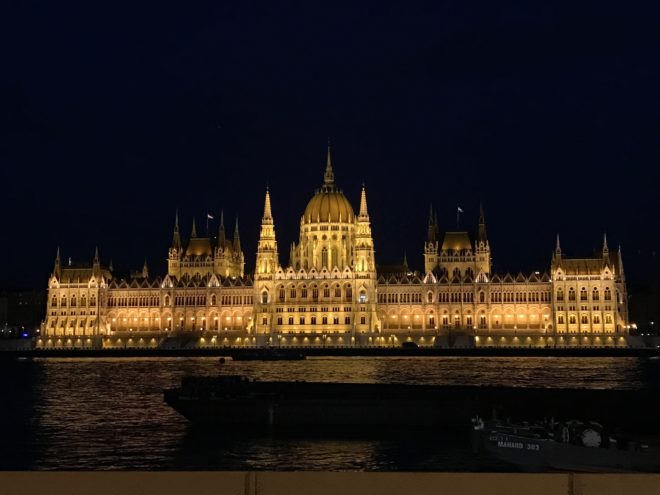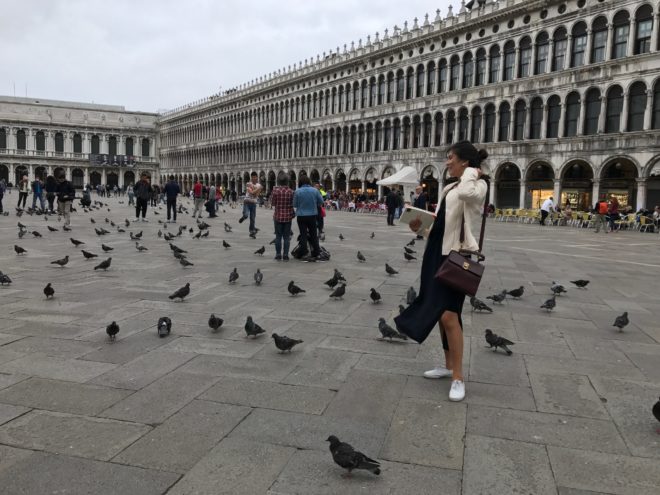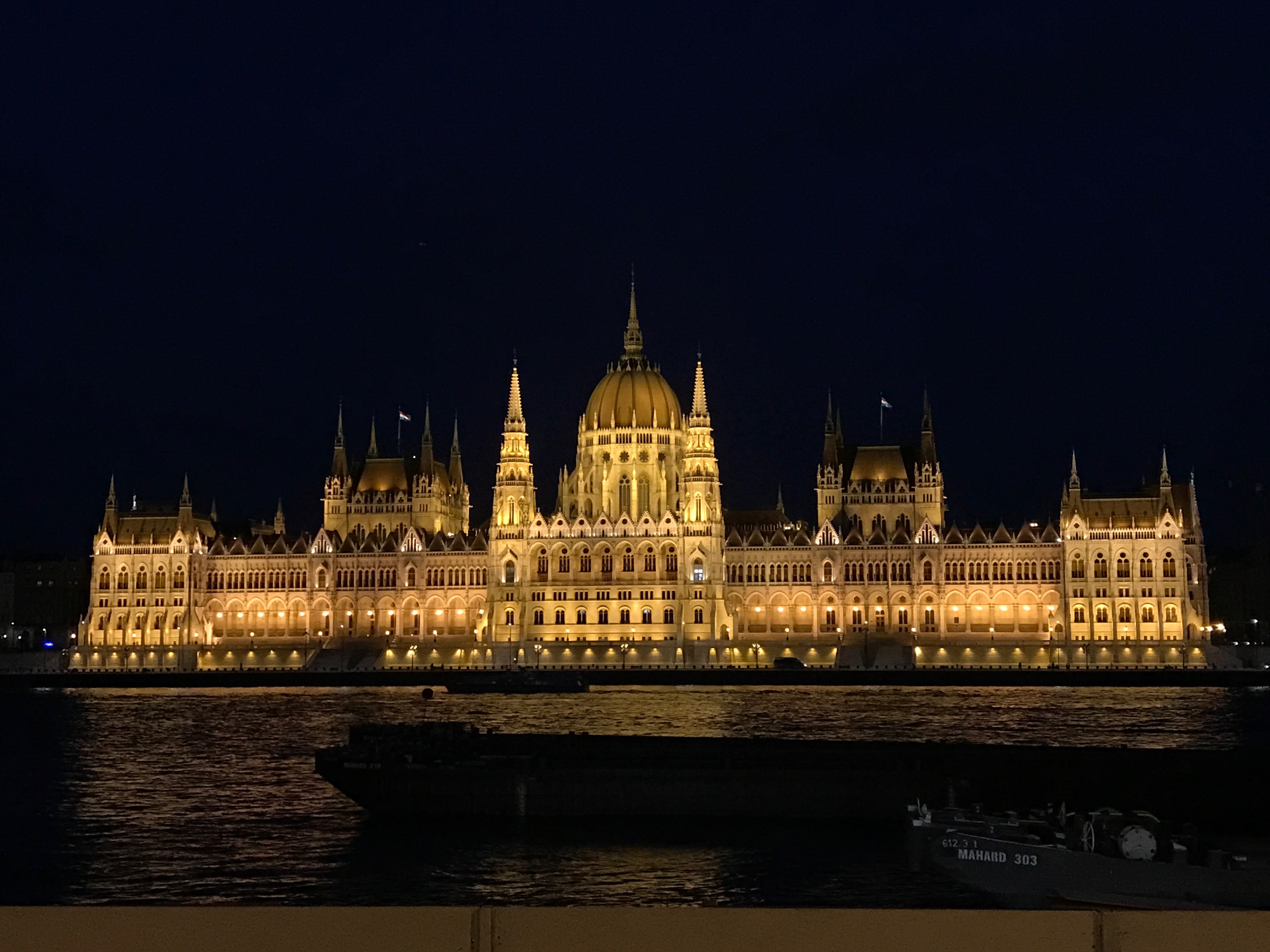
On a recent trip to Europe, I saw vestiges of the past that surpassed my expectations. The continent is replete with medieval landmarks that seamlessly coexist with modern elements: palaces, churches, museums, public squares, monuments and towers.
The landmarks provide a veneer of permanence to these European capitals, cloaking the endless upheavals that dot the continent’s rich but tumultuous history.
The whirlwind journey through time and history, as it were, took less than two weeks. This was my first time in Eastern Europe, a vast, landlocked geographical area that was once largely hidden behind the so-called “Iron Curtain” in the Cold War.
For travelers in the age of social media, ditching burdensome printed maps or travel guides and turning to travel apps for information via online reservations has become the norm.
What made this trip unique—compared to previous overseas trips the past two decades as a journalist—was the ease with which I accessed online booking travel apps for hotels, trains and flights.
These apps are the game-changers in the 21st century. They were my online travel buddies as I hopped onto the continent’s ultra-efficient train networks, which usually offer cheaper fares through rail passes or train tickets compared to airlines, and which afforded me a front-seat view of the ever-changing landscapes of this continent.
My voyage started with a grueling 18-hour flight from Manila to Venice via Abu Dhabi. Venice, my first stop, is at the doorstep of Central and Eastern Europe.
Built on a lagoon in the northern edge of the Adriatic Sea, the “floating” City of Venice in Italy has no roads. The quickest way to go around the city is by the vaporetto (water bus system) that traverses the Grand Canal, a waterway lined with jaw-dropping Renaissance and Gothic palaces. One can buy a daylong or weeklong pass for flexible travel plans.
Hopping on the famous gondolas, ancient boats operated by fedora-sporting oarsmen, is pricey—80 to 100 euros per ride—and they cover only short distances.
No roads
But Venice is best explored by walking. There are no taxis or cars, as there are no roads wide enough to accommodate them.

Tourists can roam around Piazza San Marco, its central square, whose main attraction is the St. Mark’s Basilica, a cathedral decorated with Byzantine mosaics.
The cathedral’s façade has bronze statues of the replica of four horses perched above the porch, overlooking the large square that teems with tourists and pigeons. One can’t miss the nearby red brick St. Mark’s Campanile (bell tower), which offers tourists a panoramic view of the city for 8 euros.
Tired from walking for four straight days, I opted to laze around the square, admiring the scenery. From an al-fresco café fronting Doge’s Palace, I surveyed my surroundings, noting the two large granite columns that frame the southeast entrance to the square from the lagoon waterway. The Piazzetta (adjoining open space) di San Marco is commonly depicted in Venetian paintings, with the Doge’s Palace on the right.
In this small city of 264,000 Venetians, there’s a modus vivendi between the eternal and ephemeral, as faith coexists with commerce.
Catholicism’s most visible strongholds are the churches that stand at just about
every corner. Many of them—adorned inside with impressive frescos and murals of biblical stories painted by the great masters of Italian art—have been turned into museums.
The rule of thumb in Venice is to keep walking because you’ll never know what to discover at the end of a narrow alley. There are rows of souvenir shops, restaurants, coffee shops, art galleries and museums.
Venice is also home to Giardini, the permanent site of the world-renowned La Biennale di Venezia art exhibitions that started in 1895.
But a visit to Venice won’t be complete without spending a night at Rialto Bridge, the oldest of the four bridges that span the Grand Canal. At high tide, Italian restaurants, which dot many docking areas near the ancient bridges, engage in an increasingly challenging battle against rising seawater due to climate change.
From Sta. Lucia, Venice’s central train station, I took an overnight train to Vienna, Austria. My original plan to revisit Vienna, which I last went to in 2007, was scuttled, after I found a day train to Budapest en route to the Balkans (via Belgrade).
Taking European overnight trains saved me some precious euros and valuable time, as I managed to sleep while traveling to the next destination.
Night trains are hotels on wheels, but relatively cheaper. I added only 20 euros (around P1,190) for a couchette in a six-berth compartment that comes with an individual blanket, sheet and pillow. The bunks are converted back into seats in the morning, right before breakfast.
I really appreciate that sleeper trains have power sockets, a lifesaver for my mobile gadgets. Day trains have reclining seats, with reserved seats equipped with individual tables and power sockets, too.
Gateway to the Balkans
It was noon when I reached the Austro-Hungarian border, after passing through endless fields and hills in the countryside of a vast territory once ruled by the Habsburg monarchy.
The Keleti rail station in Budapest has been an ancient crossroads of sorts, a gateway to the Balkans—if you’re going south—or the rest of Eastern Europe and the Russian Federation, if traveling eastward.
Budapest, the capital of Hungary, is comprised of two distinctive districts separated by the River Danube. Bridges, including the famous 19th-century Chain Bridge, connect the two cities of Buda and Pest that, with Obuda, later merged into one city in 1873.
On this trip, I was booking my hotels on the fly. It was the best decision ever because I noticed that travel sites such as Booking.com and TripAdvisor offer last-minute deals, or even same-day booking offers that were relatively cheap.
Thanks to these third-party booking apps, I ended up at Danubius Hotel Gellert, an Art-Nouveau-style hotel that opened in 1918. The hotel has its own spa and sits next to the world-famous Gellert thermal baths.
On its website, Gellert takes pride in being an “iconic Budapest landmark” that has been featured in Hollywood films and has played host to European royalty.
Despite a tight schedule, I visited the Gellert Hill, which offers a sweeping view of the city. I also checked out the Hungarian parliament that was inaugurated in 1896, incidentally the same year of the Philippine Revolution against Spain. Viewed from the opposite riverbank of the Danube on the Buda side, the neo-Gothic architecture of the parliament turns magical at twilight.
At first light the following day, I returned to Budapest Keleti station via the Budapest metro, the second oldest subway in the world, to catch a train to Prague, the final destination of this journey. The northbound day train passed by historic Bratislava, capital of Slovakia, en route to Prague.
Wonder of Prague
Prague is an architectural wonderland. You’ll be mesmerized by the medieval allure of the capital of the Czech Republic.
One has to experience Prague to understand its charms.
All the stories my Aussie and Kiwi friends had told me about this place proved to be an understatement.
There are countless spots in Prague that are just too pretty to be forgotten, with people astoundingly attractive and warm toward tourists.
And food is cheap!
Much like Budapest, Prague is bisected by a river that separates the Old Town—where the old town square is to be found—from the Prague Castle complex, a Disneyland-like historic site that dates back to the ninth century.
The Castle complex—with its Baroque and Renaissance palaces, Gothic churches, well-preserved monasteries and buildings—dominates Prague’s skyline, as the palace sits on a hill.
The Old Town has its own languid charm—the town square hosting the medieval astronomical clock, colorful Baroque churches, museums, theaters and concert halls.
Gothic sentinels
I found two towers—the Powder Tower, a medieval Gothic city gate that leads to the main square, and the Old Town Bridge Tower, another Gothic gate that serves as sentinel to the 14th-century Charles Bridge.
The bridge is part of the so-called “royal way” that connects the two districts over the River Vltava.
Much like Venice, Prague is best experienced by walking. Wandering its cobbled streets, I found a maze of historical and religious artifacts everywhere.
One such important discovery was the Baroque St. Nicholas Church originally built in the 12th century in the corner of the Old Town Square. I was awestruck by the giant chandelier and colorful frescoes on the walls of its interior.
The church now hosts a daily recital of classical music. For just 400 Czech crown (P930), I soaked in Bach, Mozart, Handel and Czech composer Dvorak, performed by a mixed choir of college teachers and students.
After the 5 p.m. concert, I had coffee in one of the al-fresco cafés in the square, listening to famous saxophone player and street artist Vladimir Pinta do the immortal standard “Love is a Many-Splendored Thing.”
The bohemian spirit seemed to pervade the air in that instance, as a few steps away from the huddle of spectators was a waiting horse-drawn carriage with a woman holding the reins.
The Rococo-styled Kinský Palace, which houses the national gallery, and 14th-century landmark Tyn Church towering over the square, provided a most fitting backdrop to a perfect moment.
Before leaving Prague, I went book hunting around the Wenceslao Square, site of the Velvet Revolution in 1989 that dismantled the 41-year communist rule over the former Czechoslovakia and installed Vaclav Havel as president.
The last day of this journey also took me to the impressive Jerusalem Synagogue, styled in Art Nouveau and Moorish designs, and the nearby haunting holocaust memorial, which sits next to the Jewish cemetery containing graves that date back to the 14th century.
From Prague, I took a sleeper train back to Italy via Linz in Austria. I opted to have an overnight stay in Venice before flying back to Manila.
In hindsight, I believe that the collective effort to preserve the past gives Europeans a sense of belongingness, a crucial ingredient in the formation of a national identity especially for the succeeding generations.
This crucial lesson gives impetus to young democratic countries like the Philippines to preserve and restore socio-cultural artifacts, instead of demolishing centuries-old landmarks to pave the way for real estate development.













































